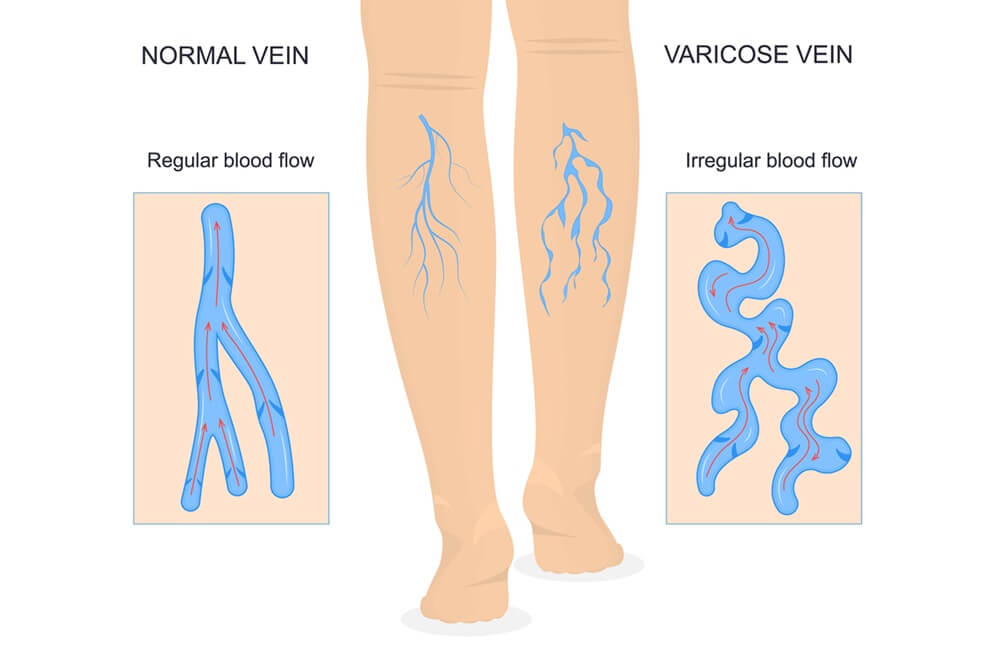Varicose veins are a medical issue characterized by a network of enlarged and swollen veins, typically appearing purple-blue or red, and often painful.
Causes of Varicose Veins
Veins contain valves that help blood flow towards the heart. In some cases, these valves may become damaged or weakened, leading to impaired blood flow towards the heart and its return, causing blood to accumulate in the veins, resulting in swollen or bulging veins.
Risk Factors
Risk Factors for Varicose Veins include:
- Gender, as women are more prone to varicose veins than men.
- Aging, as vein elasticity decreases significantly, leading to stretching.
- Family history or genetic factors.
- Obesity.
- Pregnancy.
- Prolonged standing or sitting.
- Lack of movement and activity.
Types of Varicose
Types of Varicose Veins include:
- Spider veins: These are thin veins near the skin surface, often red or blue, usually causing no complications but may affect the aesthetic appearance of the legs due to the appearance of blood vessels on the skin's surface.
- Surface varicose veins: These are prominent and swollen veins on the skin surface, often large in size, requiring prompt treatment to avoid complications.
Treatment of Varicose Veins with Interventional Radiology
When preventive measures such as compression stockings and weight loss fail, treatment with interventional radiology is recommended. It is considered a safe and effective treatment compared to traditional surgical methods, which require general anesthesia and may not be suitable for all cases.
Interventional radiology treatment for varicose veins has become an effective alternative to surgery. The procedure typically takes about half an hour under local anesthesia, with no need for major surgical incisions.
Treatment with interventional radiology involves inserting a laser catheter into the affected vein through a small opening in the skin surface. The laser beam is then directed at the varicose veins to heat them, causing them to contract and eventually disappear.

